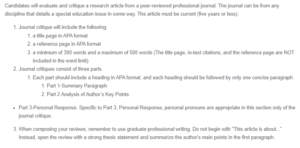Journal Critique – Inclusive Education and Its Challenges
Over the past decade, various countries have embraced inclusive education to ensure every child can access education. Inclusive education also focuses on ensuring that learners with special needs receive high-quality education in an environment that considers their needs. However, implementing inclusive education policies has been challenging because of various issues faced by learning institutions that offer special education. One of the main issues is the unavailability of special education teachers (SET). Although learning institutions have taken different approaches to reduce SET unavailability, there is still a high turnover caused by attrition, lack of proper teacher preparation, enrollment factors, and geographic locations.
According to Mason-Williams et al. (2019), many institutions offering special education experience challenges meeting the learners’ needs because of high teacher turnover. The authors argue that there is an inadequate supply of prepared and willing individuals to serve students who require special education and a limited number of teachers within the required timeframe. The unavailability of SET is a complex issue that is challenging to resolve because the unavailability is caused by both high turnover and low enrollment of SET in teaching programs (Mason-Williams et al., 2019). Many learning institutions offering special education are also unable to attract teachers with the required qualifications, thus reducing the quality of education that special education students get (Mason-Williams et al., 2019). Another challenge that learning institutions face is attrition. According to Mason-Williams et al. (2019), many special education teachers leave the profession and request transfers, leading to the unavailability of SET in learning institutions. Request transfers are influenced by the geographical locations of the learning institutions. Mason-Williams et al. (2019) argue that administrators in suburban areas are forced to hire special education teachers who lack a degree or certification because of the unavailability of SETs willing to teach in the institutions. Other enrollment factors include race-based barriers that people of color face when enrolling in teacher education programs and the discrimination of people of color in enrollment in teaching practice (Mason-Williams et al., 2019). Therefore, resolving the unavailability of SET requires resolving enrollment issues in teaching practice and training.
Undeniably, SET is unavailable in many suburban areas. Mason-Williams et al. (2019) suggest that transfer requests cause the unavailability of SET in suburban areas. Many special education teachers in suburban and rural areas request transfers to other regions, leading to attrition, which causes high turnover among special education teachers. Following this, some learning institutions hire underqualified special education teachers because of the unavailability of qualified SETs. One of the approaches used to address the unavailability of SET is hiring teachers with less experience to fill the gap created when qualified teachers leave, thus reducing the quality of education that special education students receive. A lack of proper teacher preparation also causes the unavailability of qualified SETs. Subsequently, special education teachers are not adequately trained to handle special education students in different geographical regions, leading to high turnover and attrition. Notably, the lack of adequate teacher preparation is caused by discrimination against people of color when enrolling in colleges that offer special education training (Mason-Williams et al., 2019).
I agree with the author’s argument that the shortage of SETs in suburban areas is caused by request transfers. Many SETs in suburban areas do not have access to the resources they need to meet the learners’ needs, thus increasing the intention to leave. SETs in suburban areas may also receive a lower salary than those in urban areas because tuition fees in most institutions in suburban areas are lower than those charged in urban areas, thus increasing attrition (Mason-Williams et al., 2019). I also agree that the shortage of SETs can be resolved by hiring unqualified teachers because they may be more willing to work for less pay and move to any geographical region as long as they get compensated. For instance, a special education teacher beginning their career in the sector may opt to work in any region and under any conditions to gain the experience they need to advance their career. Therefore, in conclusion, it is crucial to consider on-the-job training for SETs to effectively address the issue of SET shortage and enhance the quality of education that special education learners receive.
References
Mason-Williams, L., Bettini, E., Peyton, D., Harvey, A., Rosenberg, M., & Sindelar, P. T. (2019). Rethinking shortages in special education: Making good on the promise of an equal opportunity for students with disabilities. Teacher Education and Special Education: The Journal of the Teacher Education Division of the Council for Exceptional Children, 43(1), 45–62. https://doi.org/10.1177/0888406419880352
ORDER A PLAGIARISM-FREE PAPER HERE
We’ll write everything from scratch
Question

Inclusive Education and Its Challenges
Candidates will evaluate and critique a research article from a peer-reviewed professional journal. The journal can be from any discipline that details a special education issue in some way. The article must be current (five years or less).
- Journal critique will include the following:
- a title page in APA format
- a reference page in APA format
- a minimum of 300 words and a maximum of 500 words (The title page, in-text citations, and the reference page are NOT included in the word limit).
- Journal critiques consist of three parts.
- Each part should include a heading in APA format, and each heading should be followed by only one concise paragraph.
- Part 1-Summary Paragraph
- Part 2 Analysis of Author’s Key Points
- Each part should include a heading in APA format, and each heading should be followed by only one concise paragraph.
- Part 3-Personal Response. Specific to Part 3, Personal Response, personal pronouns are appropriate in this section only of the journal critique.
- When composing your reviews, remember to use graduate professional writing. Do not begin with “This article is about…” Instead, open the review with a strong thesis statement and summarize the author’s main points in the first paragraph.

